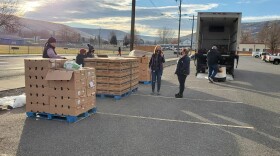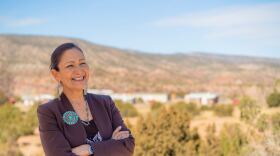
Daniel Spaulding
Indigenous Affairs Reporter/Producer, Our Living LandsExpertise: Radio hosting, station operations/management, underwriting, audio production, broadcast technician
Highlights
- Interviewed the first Native American Secretary of the Interior, Deb Haaland
- Passionate advocate for Indigenous voices and created multiple outlets in media to amplify and uplift Indigenous perspectives
- A board member of Voces Internship of Idaho
- Won “Idaho’s Best Radio Show 2024”
Experience
I joined Boise State Public Radio as the Indigenous Affairs Reporter and Producer for Our Living Lands, a weekly radio show that focuses on climate change and its impact on Indigenous communities. It is a collaboration between the Mountain West News Bureau, Native Public Media and Koahnic Broadcast Corporation.
I also serve my community on the Nez Perce Reservation as the KIYE FM Radio Coordinator, “The Voice of the Nimiipuu.” Beyond broadcasting, I have built a personal brand as a dynamic speaker and event host. I have delivered keynote addresses at universities across Idaho, inspired youth at leadership summits and emceed numerous community events. I am a champion for Indigenous voices and empower Indigenous people to reclaim their narratives. I have uplifted their stories through the diverse platforms I have created in media.
-
The report finds children raised by grandparents face higher rates of poverty and limited access to support services.
-
The Miccosukee Tribe has faced climate change on their lands in the Florida Everglades. Now they are fighting a federal immigration detention center.
-
Data centers are powering a technological boom but they also use a lot of water. Our Living Lands Producer Daniel Spaulding spoke to Kaleb Roedel about his reporting on the Pyramid Lake Paiute Tribe's concerns about a data center near their reservation.
-
Amy Bowers Cordalis is a Yurok attorney who has fought to protect her people's land, water, and way of life. Our Living Lands producer Daniel Spaulding spoke to Cordalis about her new book, The Water Remembers.
-
A new national survey by the Urban Indian Health Institute is working to reveal how widespread traumatic brain injuries are among Indigenous survivors of domestic and sexual violence.
-
Climate is impacting Indigenous communities in the Pacific. Our Living Lands Producer Daniel Spaulding spoke to Anita Hofschneider, a reporter who covers issues including sea level rise, fires and storms.
-
The ongoing federal government shutdown is putting crucial food programs – and families that rely on them – at risk.
-
Deb Haaland, a member of the Pueblo of Laguna, was the first Indigenous US Secretary of the Interior. Our Living Lands Producer Daniel Spaulding spoke with her about the challenges and opportunities facing tribes, including climate change and political headwinds.
-
In 2021, Chuck Sams became the first Indigenous director of the National Park Service. Our Living Lands producer Daniel Spaulding spoke to Sams about his work, climate change, and what the country can learn from Indigenous land management practices.
-
Last week, Mountain West News Bureau reporter Murphy Woodhouse brought us a story about cultural burning efforts by the Karuk Tribe in Northern California. Our Living Lands Producer Daniel Spaulding spoke with Woodhouse to discuss Karuk burning and its implications across the West.











